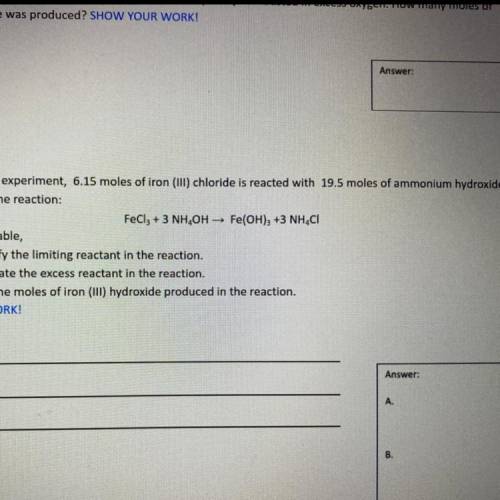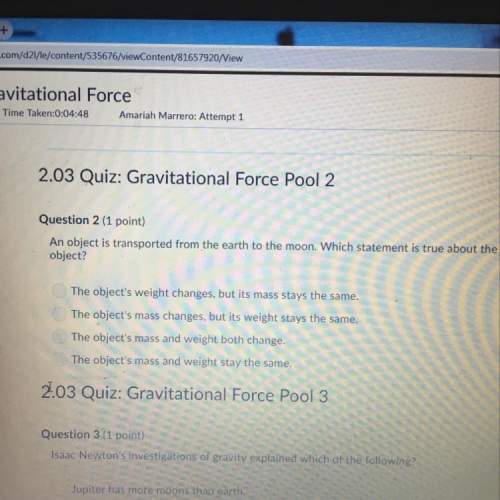
Chemistry, 05.03.2021 22:50 haleymoodie6034
In a chemistry experiment, 6.15 moles of iron (III) chloride is reacted with 19.5 moles of ammonium hydroxide
according to the reaction:
FeCl3 + 3 NH, OH → Fe(OH)3 +3 NH, CI
Using a RICE table,
a) Identify the limiting reactant in the reaction.
b) Calculate the excess reactant in the reaction.
c) Find the moles of iron (III) hydroxide produced in the reaction.
SHOW ALL WORK!
R.
1
A.
С
E
B.


Answers: 1


Another question on Chemistry

Chemistry, 21.06.2019 21:30
Which statements are true about electrolysis? check all that apply. electrolysis requires an acid be present. electrolysis is described by two half-reactions. electrolysis is not an industrial process. electrolysis results in commercially valuable products. electrolysis involves the transfer of electrons. reduction results in the loss of electrons. oxidation results in the loss of electrons.
Answers: 1

Chemistry, 22.06.2019 07:00
Which atom or ion is the largest? a. k b. k+ c. ca d. ca2+ e. li
Answers: 1

Chemistry, 22.06.2019 19:40
Scientists have developed an explanation of a phenomenon from several verified hypotheses. the explanation has been confirmed through numerous experimental tests.which option best describes this explanation? a. scientific lawb. research questionc. hypothesisd. scientific theory
Answers: 3

Chemistry, 23.06.2019 00:00
What is the empirical formula of a compound that is 50.7% antimony and 49.3% selenium ?
Answers: 2
You know the right answer?
In a chemistry experiment, 6.15 moles of iron (III) chloride is reacted with 19.5 moles of ammonium...
Questions



Mathematics, 19.05.2021 23:50

Engineering, 19.05.2021 23:50

Mathematics, 19.05.2021 23:50

History, 19.05.2021 23:50


Mathematics, 19.05.2021 23:50

Physics, 19.05.2021 23:50



Mathematics, 19.05.2021 23:50


Mathematics, 19.05.2021 23:50





Mathematics, 19.05.2021 23:50




